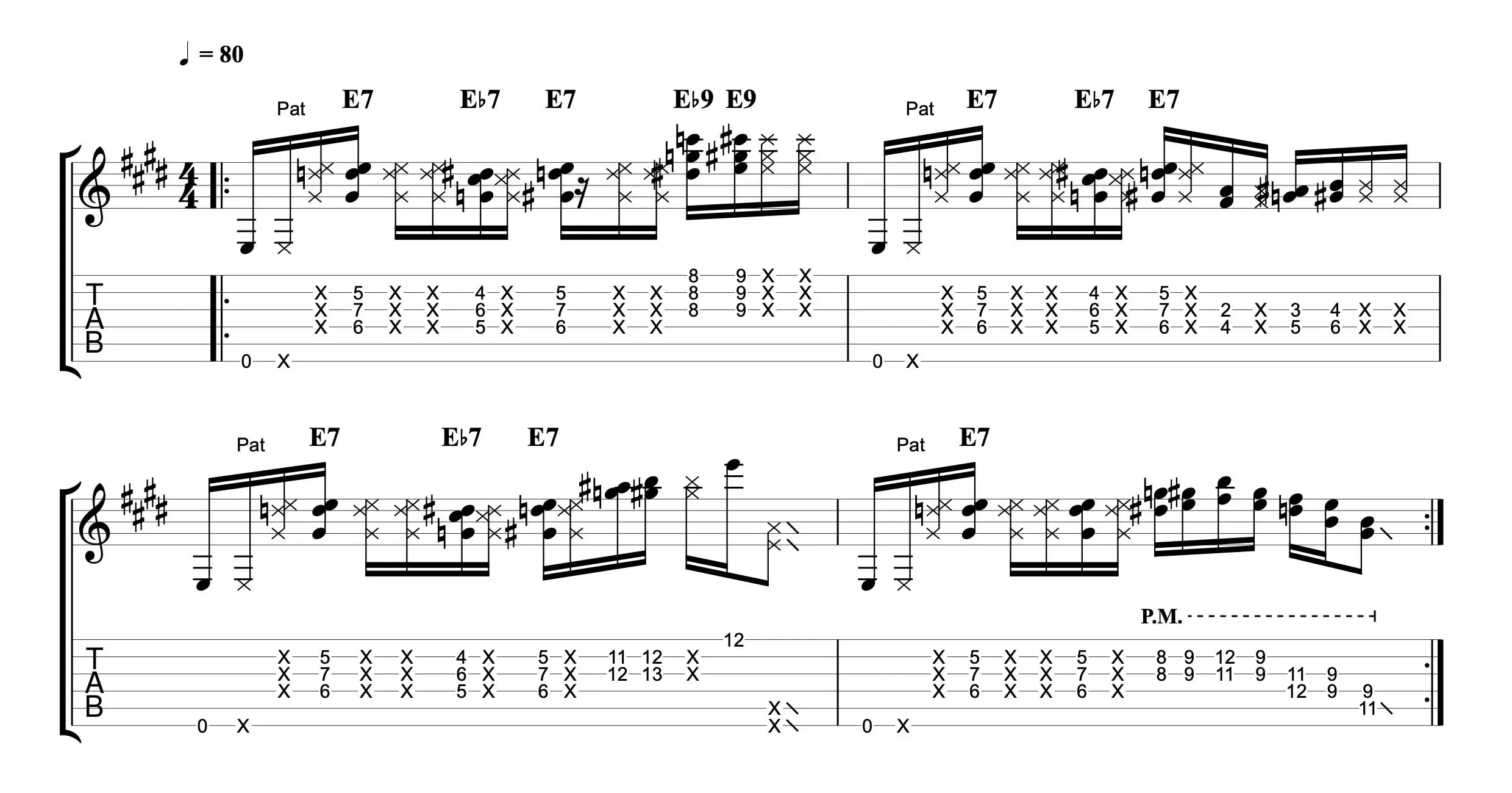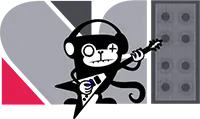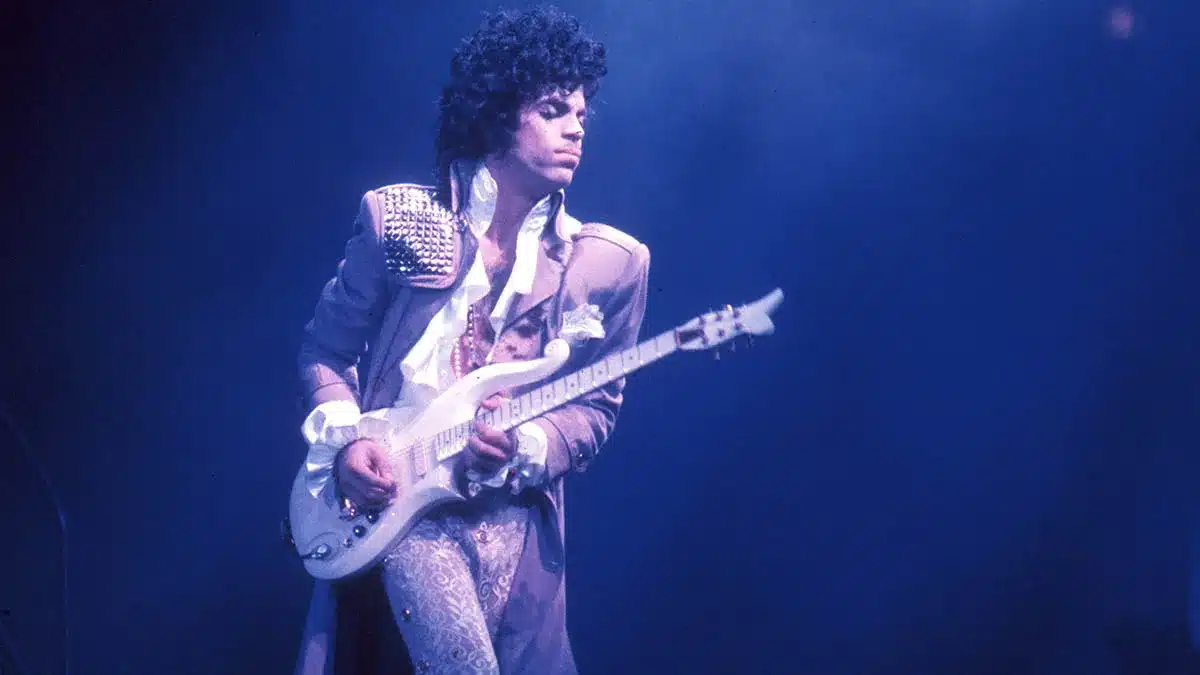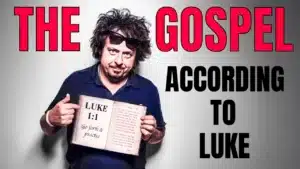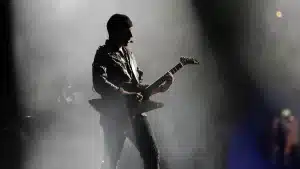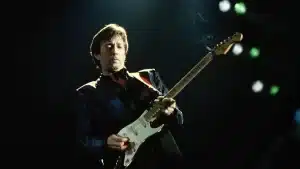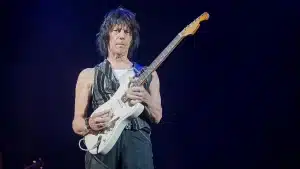In this lesson, we’re looking at pop-funk. Generally seen as popular, radio-friendly music, pop-funk is a pretty wide sub-genre, ranging from classic Michael Jackson to the output of modern players such as Cory Wong – part of a new breed of guitarists who skilfully blend old-school funk with other genres such as hip-hop, gospel and jazz. So here we’ll look at ideas from seven pop-funk players.
David Williams is one of the most important funk guitarists, yet remains largely unknown. His intricate lines have graced some of the biggest ever hits, including Rock With You, Billie Jean and Thriller.
During an era filled with hair-metal and shred, Williams extolled the virtues of the ‘rhythm solo’, as exemplified in his short lead break in Billie Jean. This characteristic style saw him as the most sought-after session guitarists of the ’80s and ’90s.
The other guitarists here surely drew inspiration from Williams’ playing, so here’s where we’ll start our lesson.
Example 1. David Williams
In this Williams-style riff, precise syncopation and picking technique are required throughout, with a couple of phrases that start on the offbeat 1/16th upstroke. This B major based riff uses an Em7 chord borrowed from the parallel key of B minor.
When jumping between non diatonic chords, you need to use the appropriate notes. Here it means a slight tweak in Bar 4; we’re using a D note derived from B natural minor (B-C#-D-E-F#-G-A) for the Em7 section.
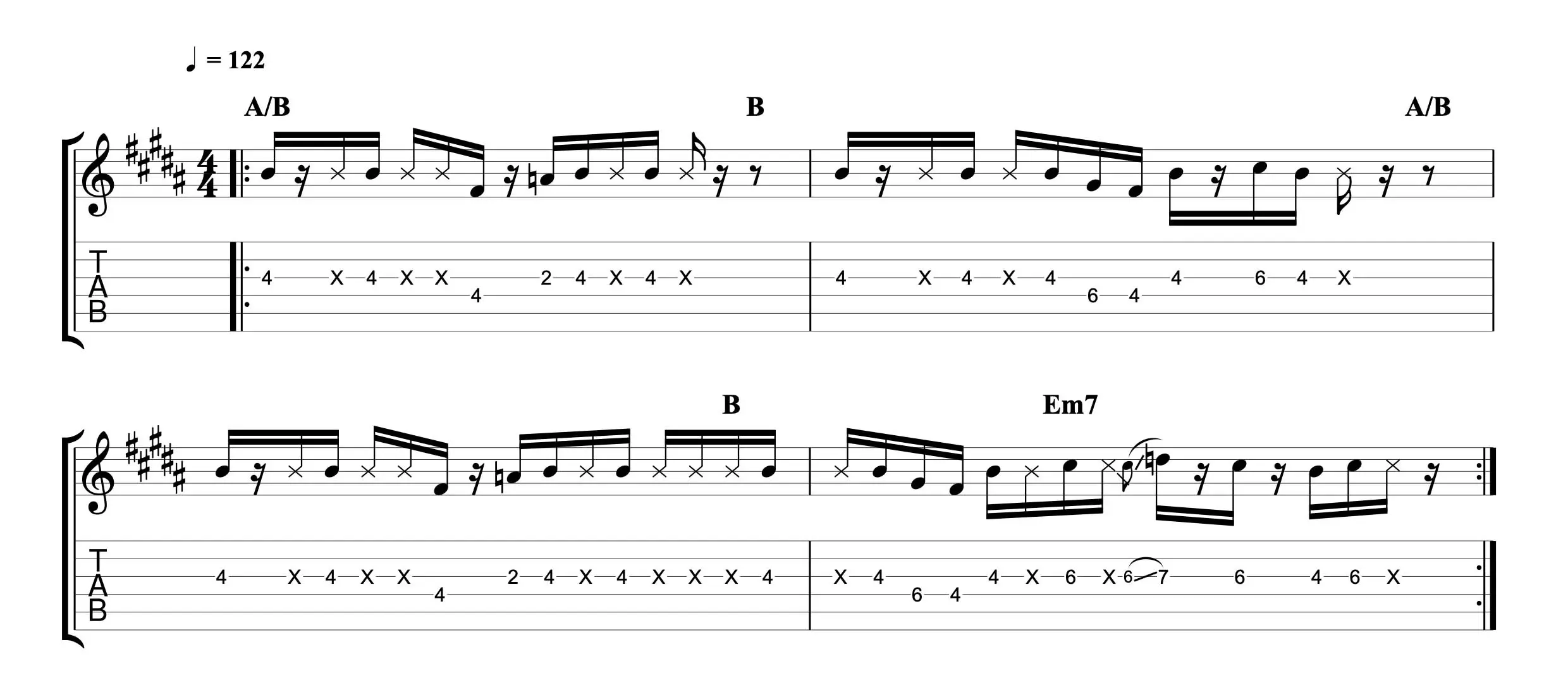
Example 2. Paul Jackson Jr.
Paul Jackson Jnr was one of the most prolific LA session guitarists of the ’70s-’90s, performing alongside Michael Jackson, The Temptations, Luther Vandross, Bobby Womack, The Pointer Sisters, Chicago and Whitney Houston.
His credits are truly astonishing, and extend beyond the classic session player era into the modern day with artists such as Daft Punk and The Weeknd.
This example centres around an Am11 shape that’s played with the third and fourth fingers (the fourth finger should be barred over the top two strings).
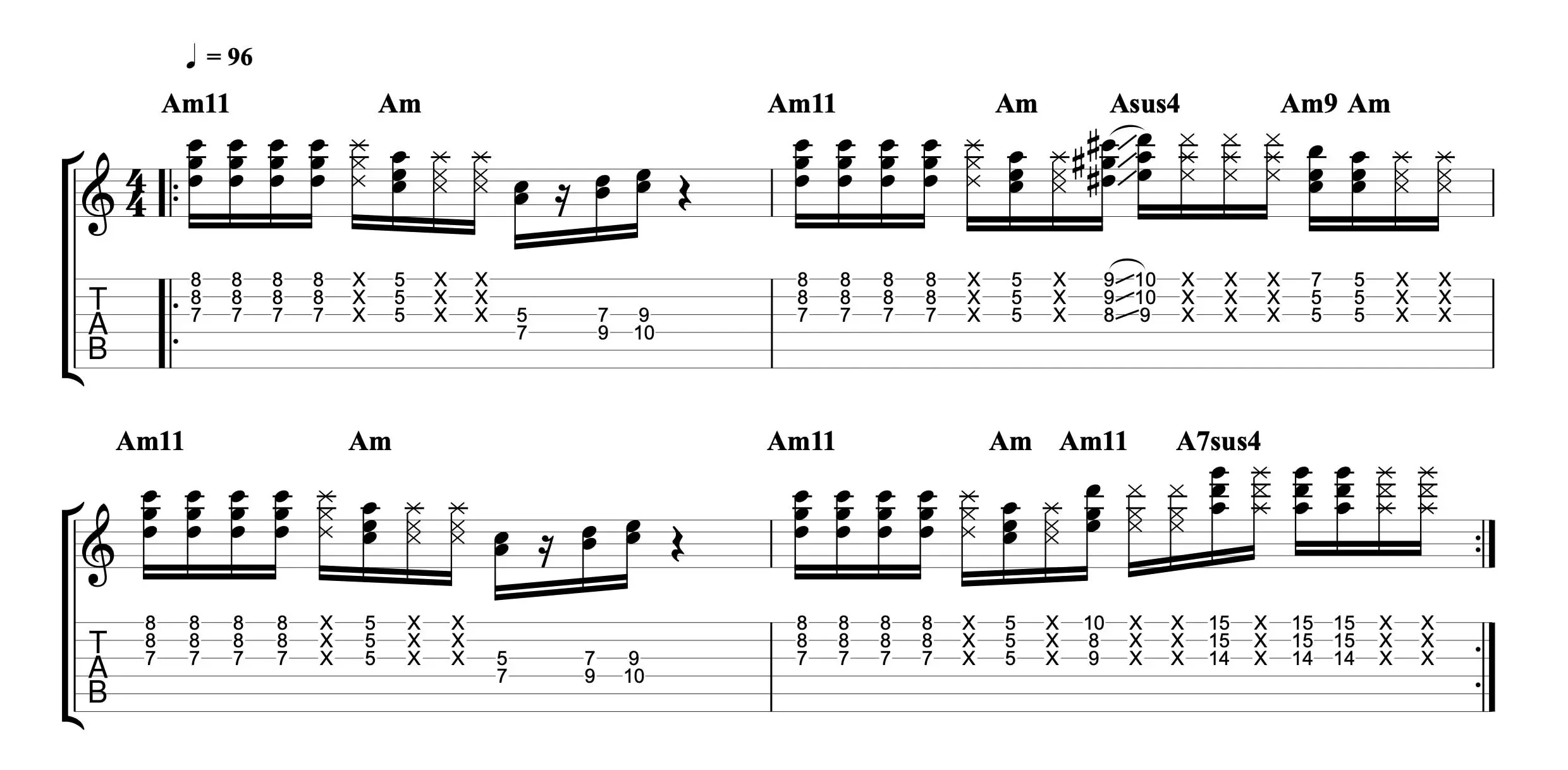
Example 3. Prince
Prince is one of the world’s most iconic artists who shouldn’t need any introduction. He helped to pioneer the Minneapolis Sound in the late ’70s, a funk-rock sub-genre that mixed in elements of new wave and synth pop. Even through the artistic changes in his career, there’s an identifiable funk undercurrent on every single album.
The minor 11 shape used in the previous riff features heavily in this example. Most of the ideas are based around the closed A minor pentatonic shape in 5th position, but the extra major 6th (F#) provides that classic Prince twist, especially at the end of bar 4.
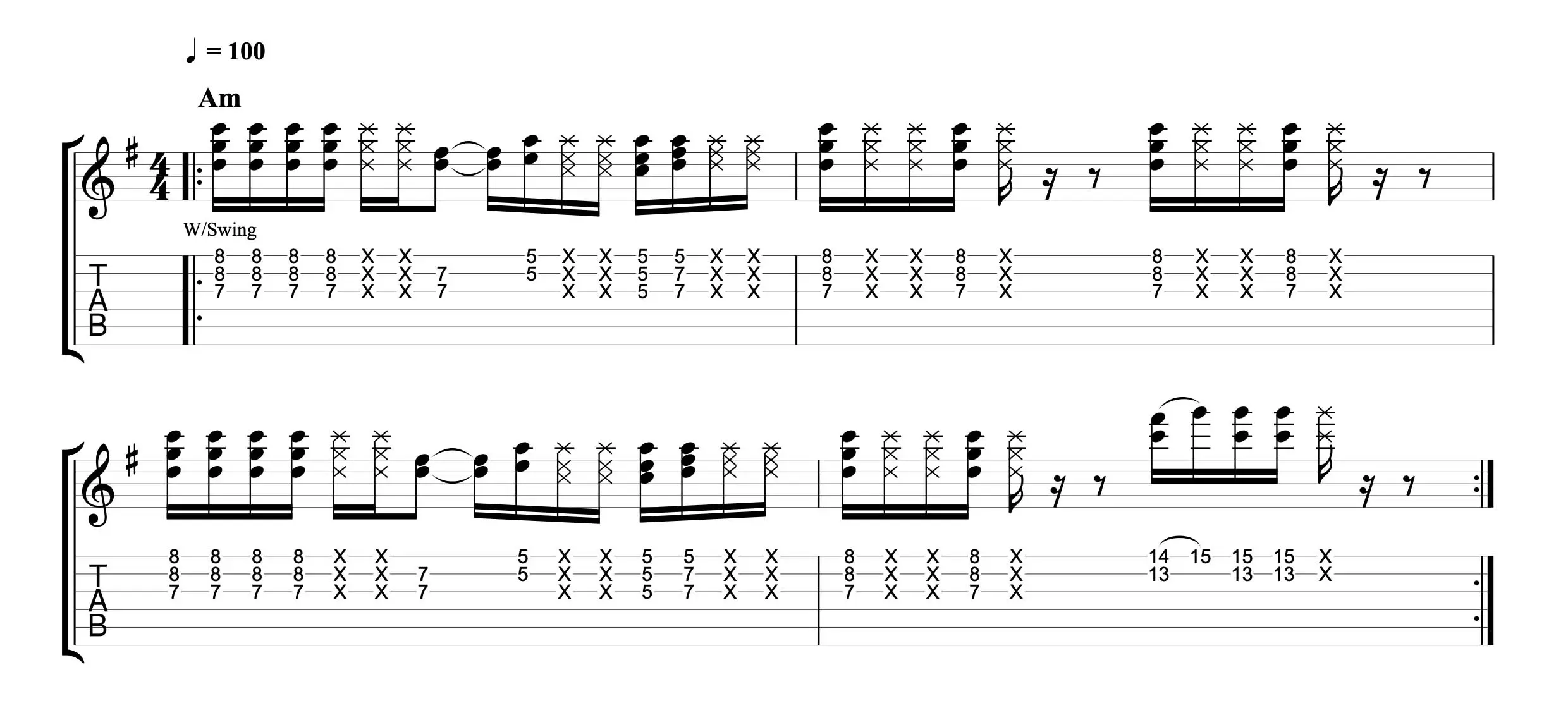
Example 4. John Frusciante
The Red Hot Chili Peppers emerged from the funk-rock revival of the ’90s, blending funk with aggressive rock to produce a punk-funk-rock sound. Unlike most of the guitarists here, John Frusciante wasn’t well-schooled in the ways of funk before joining the band.
Although he was a fan of P-funk’s Eddie Hazel, his main influences were Page, Beck, Hendrix and Zappa. He learned most of his groove and funk style from emulating the playing the Chilis’ late guitarist, Hillel Slovak.
This groove is based on a simple I-V7 (Em-B7) chord progression, but uses a D#dim7 chord as a great substitute for B7. This jazzy diminished 7th substitution is built on the 3rd degree of the V7 chord and creates a B7b9 sound. The D# also helps the chord resolve really well to the following one.
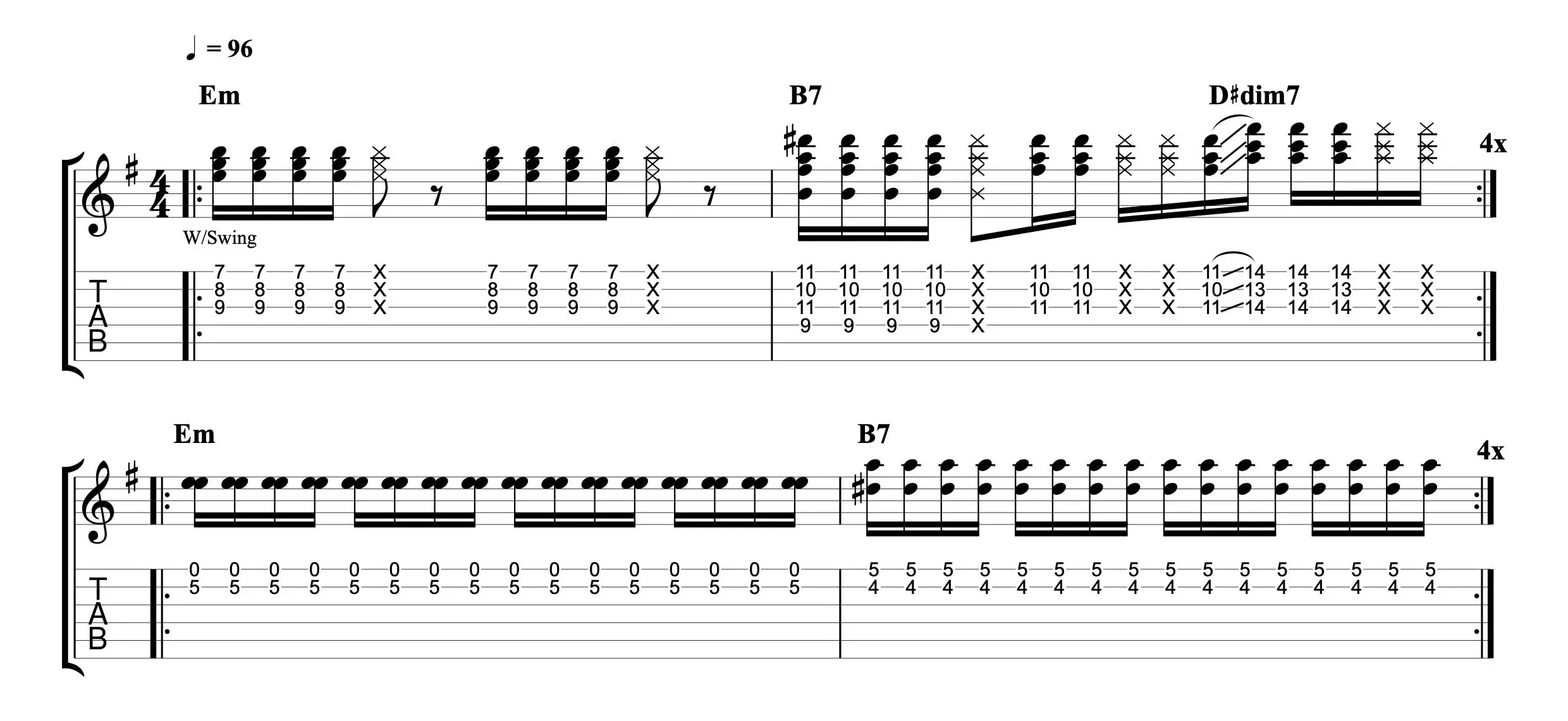
Example 5. Adam Smirnoff (Lettuce)
Lettuce have been at the forefront of modern, largely instrumental funk ever since their debut album Outta Here in 2002, with guitarists Adam Smirnoff and Eric Krasno providing the backbone to the Boston funk collective.
Smirnoff effortlessly blends gospel, soul and dub ideas in his funk playing, and this groove features all these styles in quick succession.
The palm-muted triplet in bar 4 is a typical reggae/dub style rhythm and sounds great against the straight eighth rhythm in the background. It should create the feeling of ‘putting on the brakes’ and is an excellent way to create rhythmic interest.

Example 6. Mark Lettieri (Snarky Puppy)
Mark Lettieri started out in the R&B and gospel scene of the Dallas, Fort Worth area of Texas, which eventually led to him joining the instrumental jazz funk group Snarky Puppy. In 2018, Lettieri joined up with The Fearless Flyers, featuring Cory Wong and Joe Dart of Vulfpeck on guitar and bass. Lettieri often uses dextrous fingerstyle, combined with gospel chord chops.
This groove borrows the slap technique of bass and converts it to the more guitar-orientated rest slap denoted by ‘RS’. The picking hand naturally comes to rest on the strings, rather than executing an overt bass-style slap.
All of the ghost notes (shown by an X in brackets) and rest slap indications use this technique with varying degrees of force, and adding the thumb will accentuate the percussive sound.
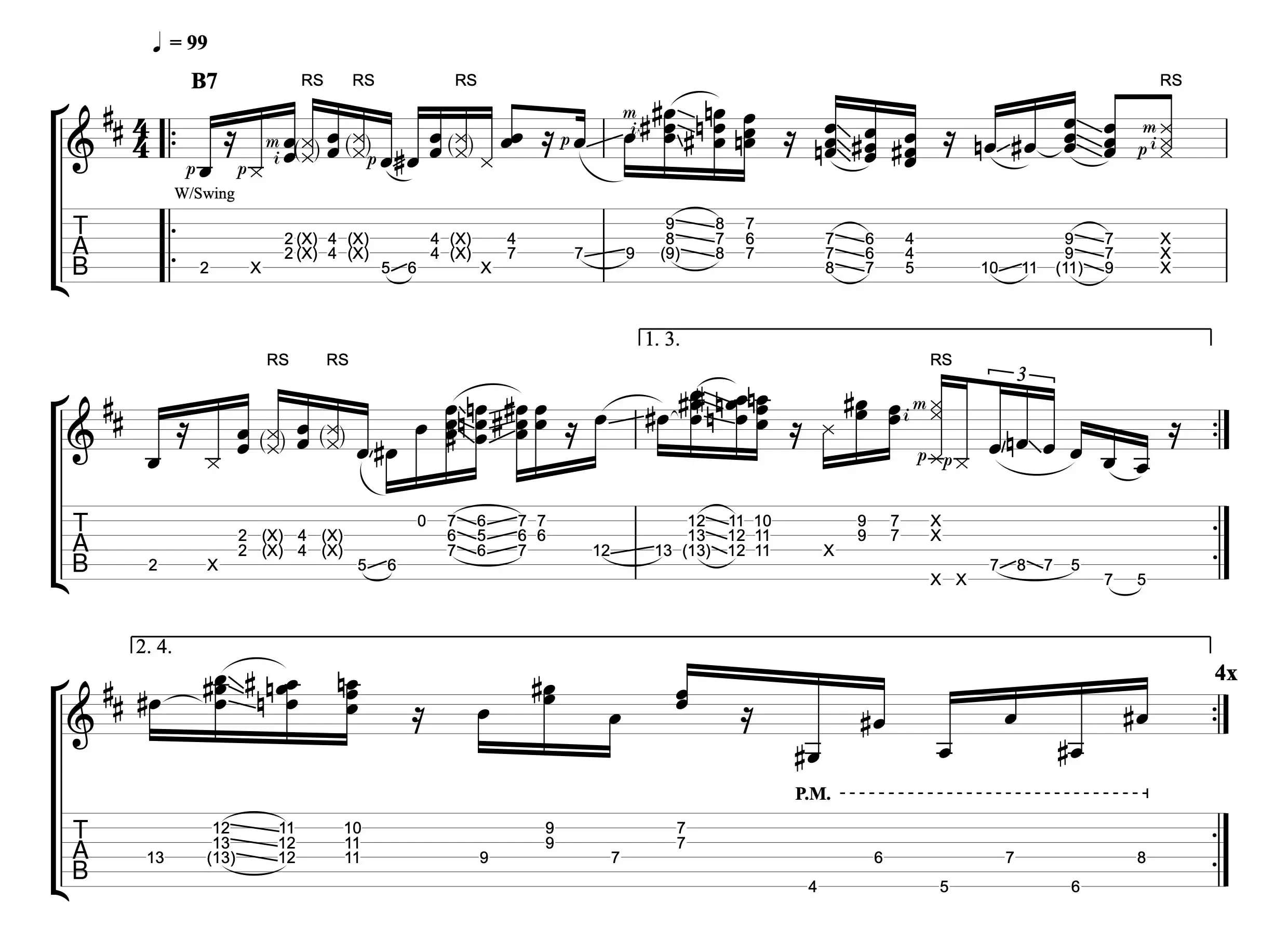
Example 7. Cory Wong
Cory Wong, from the Vulfpeck and Fearless Flyers stable, has released several solo albums and collaborated with Dirty Loops. His early influences include David Williams, Paul Jackson Jnr, and Nile Rodgers, which can be seen in his particularly rubbery, loose picking hand wrist.
This riff uses the bass guitar ‘pat’ technique (lightly patting the fretting-hand fingers on the strings, as opposed to slapping them, but without fretting specific notes, and is best executed with several flat fingers to avoid this).
It also intersperses some traditional funk chord fragments with improvised double-stops. The lick in bar 4 can be viewed through the lens of a basic E major pentatonic scale shape, slightly tweaked to include the D note from E Mixolydian for a funky E7 sound.
